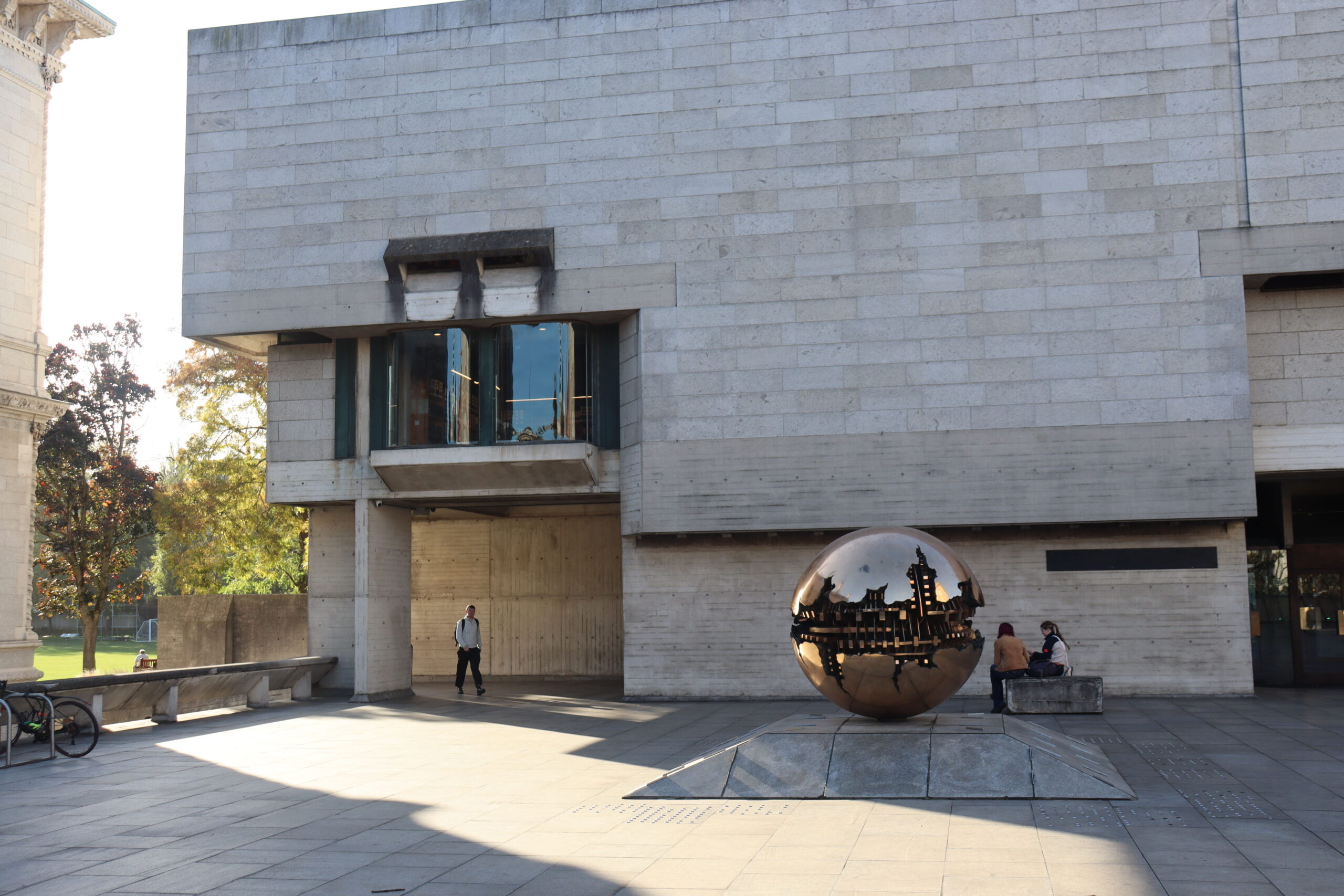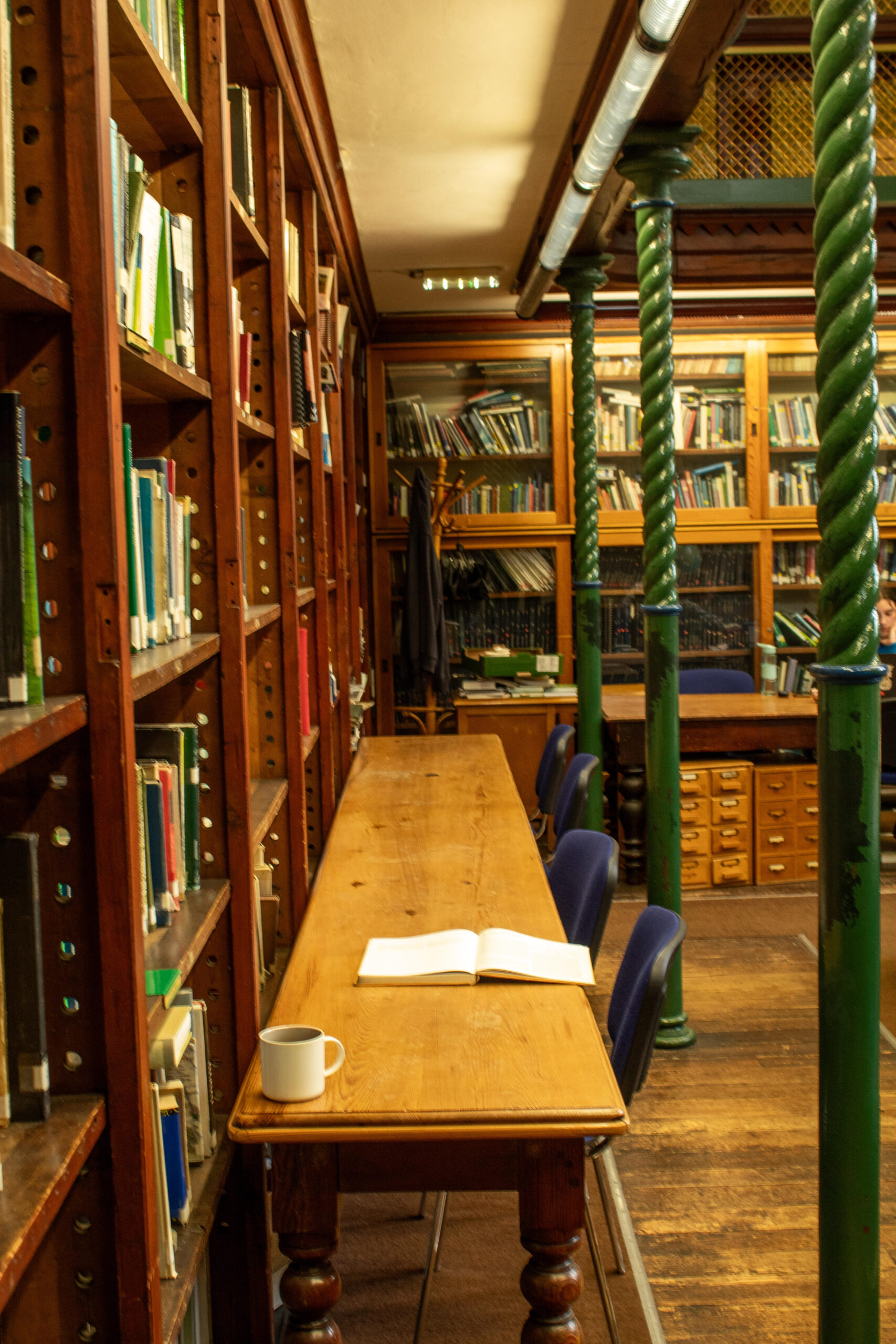
When thinking about havens of art, college campuses likely are not the first place that comes to mind. College campuses are bustling, crackling with anxiety and excitement, and at the same time cold and foreboding—places for rigorous learning as well as places to find community and joy.
As a result, and on historic campuses like Trinity, art has a particular power to disturb the order – though this power is not harnessed nearly as often as it could or should be by students.
Sculpture is a contentious art form due to its physicality and presence in a public space. It demands to be seen and addressed because the inadvertent audience must interact with it by moving through that space. On campuses, sculptures are a vehicle for enforcing the values of the institution. The Sfera con Sfera or ‘Pomodoro Sphere’, which sits before the Eavan Boland Library, serves as a beacon for tourists and an awkward obstacle for students, encapsulating this agenda. The shining silver orb blends seamlessly with the brutalist architecture of the library, evoking the power of learning through allusions to the brain and the expansion studying provides it. However, this means that the work is merely an extension of the university so any interaction passes through the mind unnoticed. It provides no spark of interest and begs no questions. As with many of the sculptures dotted around Trinity, the piece is absorbed in the general impact of the campus’s architecture and energy.
Of course, this is intentional, but it stunts the impact that sculpture and public art installations can have. Public art has the ability to cut through the mundane, and one stunning example of this occurred on the campus of Yale in 1969 amidst anti-war protests. Uninvited, a sculpture of a tube of lipstick jutting out from a tank appeared in the plaza overlooking the president of Yale’s office and a World War One memorial. This inciting work of art is called Lipstick (Ascending) on Caterpillar Tracks and was done by Yale alumna Claes Oldenburg in association with Yale architecture students. The jarring contrasts of the sculpture crack through the accepted complacency surrounding the war. Its domination over the space incites the inadvertent audience to question the status quo by disturbing the mundane. The sculpture then became a rallying point for further protests, its presence successfully inciting passion and confronting the institution.
This truly speaks to the power students have to unsettle the accepted order on campus, as what they introduce is not necessarily bound by the university’s mission. Art installations demand attention from everyone, especially when they contradict the artistic vision of the college. This makes their resonance powerful, whether it’s just the shock of something beautiful in a dreary square or a poignant political message.
“It’s important to have student art on campus because of the vacuum left by the lack of actual fine art courses here at Trinity – it’s us as students’ job to fill this gap,” said Evie Dolan, the visual coordinating officer for Trinity’s visual arts society.
Creativity, individuality, passion – these are things college cultivates and there has yet to be a significant representation of that on campus through sculpture and public art installations. Students must be the source instead of the college, as they are unburdened by agendas and historic traditions.
It’s easy to fall into rhythmic mundanity walking around campus, only having your mind expanded according to the curriculum. This is important in its own way, but as universities are places to have your assumptions unsettled, to deconstruct and reconstruct the way you see the world, having art that disturbs and provokes is crucial. If college is a place where you wake up, the art on campus must provide that shot of espresso.






